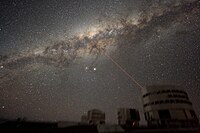
Chemical evolution of protein folding in amino acids
Sign Up to like & getrecommendations! Published in 2020 at "Chemical Physics"
DOI: 10.1016/j.chemphys.2020.110856
Abstract: Abstract We point out why the evolution chose just twenty amino acids which further form proteins and higher cellular structures of molecules in organisms. We use the properties of the loop braid group in the… read more here.
Keywords: amino acids; evolution; chemical evolution; protein folding ... See more keywords

Chemical evolution of lead in ancient artifacts -A case study of early Chinese lead-silicate glaze
Sign Up to like & getrecommendations! Published in 2020 at "Journal of The European Ceramic Society"
DOI: 10.1016/j.jeurceramsoc.2020.01.002
Abstract: Abstract Early Chinese lead glaze has been recognized as an important artifact due to its multiple significances in history and science. Some efforts were made to explore its composition and degradation, but the chemical mechanisms… read more here.
Keywords: lead silicate; chinese lead; evolution lead; chemical evolution ... See more keywords

The chemical evolution of oligonucleotide therapies of clinical utility
Sign Up to like & getrecommendations! Published in 2017 at "Nature Biotechnology"
DOI: 10.1038/nbt.3765
Abstract: After nearly 40 years of development, oligonucleotide therapeutics are nearing meaningful clinical productivity. One of the key advantages of oligonucleotide drugs is that their delivery and potency are derived primarily from the chemical structure of… read more here.
Keywords: clinical utility; evolution oligonucleotide; chemical evolution; oligonucleotide therapies ... See more keywords

Fluorine in the solar neighborhood : Chemical evolution models
Sign Up to like & getrecommendations! Published in 2018 at "Astronomy and Astrophysics"
DOI: 10.1051/0004-6361/201732092
Abstract: Context. In light of new observational data related to fluorine abundances in solar neighborhood stars, we present chemical evolution models testing various fluorine nucleosynthesis prescriptions with the aim to best fit those new data. Aim.… read more here.
Keywords: evolution; solar neighborhood; evolution models; fluorine production ... See more keywords

Giant SALR cluster reproduction, with implications for their chemical evolution
Sign Up to like & getrecommendations! Published in 2018 at "Molecular Physics"
DOI: 10.1080/00268976.2017.1406164
Abstract: ABSTRACT Particles with SALR (short-range attraction and long-range repulsion) interactions are common to many physical systems, especially biological and soft matter, yet their behaviour is still not completely understood. Using Monte Carlo simulations and a… read more here.
Keywords: reproduction; giant salr; chemical evolution; cluster ... See more keywords

Extreme Exoworlds and the Extremophile Paradox.
Sign Up to like & getrecommendations! Published in 2022 at "Astrobiology"
DOI: 10.1089/ast.2021.0153
Abstract: Extremophiles have gained prominence by providing an experimental approach to astrobiology. Extremophiles gain equal value by being part of a framework for high-level characterization of the evolutionary mechanisms that must necessarily restrict or promote their… read more here.
Keywords: paradox extreme; astrobiology; chemical evolution; extreme environments ... See more keywords

Sub-damped Lyman α systems in the XQ-100 survey – II. Chemical evolution at 2.4 ≤ z ≤ 4.3
Sign Up to like & getrecommendations! Published in 2021 at "Monthly Notices of the Royal Astronomical Society"
DOI: 10.1093/mnras/stab184
Abstract: We present the measured gas-phase metal column densities in 155 sub-damped Ly α systems (subDLAs) with the aim to investigate the contribution of subDLAs to the chemical evolution of the Universe. The sample was identified within… read more here.
Keywords: chemical evolution; gas phase; gas; sub damped ... See more keywords

Assessing stellar yields in Galaxy chemical evolution: Observational stellar abundance patterns
Sign Up to like & getrecommendations! Published in 2023 at "Monthly Notices of the Royal Astronomical Society"
DOI: 10.1093/mnras/stad1013
Abstract: One-zone Galactic Chemical Evolution (GCE) models have provided useful insights on a great wealth of average abundance patterns in many environments, especially for the Milky Way and its satellites. However, the scatter of such abundance… read more here.
Keywords: assessing stellar; chemical evolution; abundance; abundance patterns ... See more keywords

A Bayesian chemical evolution model of the DustPedia Galaxy M74
Sign Up to like & getrecommendations! Published in 2023 at "Monthly Notices of the Royal Astronomical Society"
DOI: 10.1093/mnras/stad1316
Abstract: We introduce a new, multi-zone chemical evolution model of the DustPedia galaxy M74, calibrated by means of MCMC methods. We take into account the observed stellar and gas density profiles and use Bayesian analysis to… read more here.
Keywords: evolution model; chemical evolution; model dustpedia; m74 ... See more keywords

Carbon and oxygen in H II regions of the Magellanic Clouds: abundance discrepancy and chemical evolution
Sign Up to like & getrecommendations! Published in 2017 at "Monthly Notices of the Royal Astronomical Society"
DOI: 10.1093/mnras/stx328
Abstract: We present C and O abundances in the Magellanic Clouds derived from deep spectra of HII regions. The data have been taken with the Ultraviolet-Visual Echelle Spectrograph at the 8.2-m VLT. The sample comprises 5… read more here.
Keywords: abundance discrepancy; hii regions; chemical evolution; metallicity ... See more keywords

Precision pollution - the effects of enrichment yields and timing on galactic chemical evolution
Sign Up to like & getrecommendations! Published in 2018 at "Monthly Notices of the Royal Astronomical Society"
DOI: 10.1093/mnras/sty2080
Abstract: We present an update to the chemical enrichment component of the smoothed-particle hydrodynamics model for galaxy formation presented in Scannapieco et al. (2005) in order to address the needs of modelling galactic chemical evolution in… read more here.
Keywords: galactic chemical; pollution effects; evolution; effects enrichment ... See more keywords